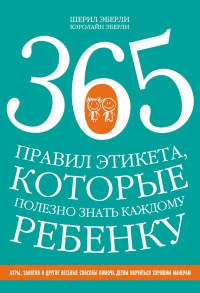Читать книгу "Как научиться учиться - Ульрих Бозер"
Шрифт:
Интервал:
Закладка:
21. Также упоминается: Kenneth R. Koedinger et al., «Learning Is Not a Spectator Sport: Doing Is Better Than Watching for Learning from a MOOC», Proceedings of the Second (2015) ACM Conference on Learning @ Scale, New York: ACM (2015): 111–120.
22. David L. Goodstein and Judith R. Goodstein, Feynman's Lost Lecture: The Motion of Planets Around the Sun, vol. 1 (New York: W. W. Norton, 1996).
23. Marlene Schomer, «Effects of Beliefs about the Nature of Knowledge on Comprehension», Journal of Educational Psychology 82, no. 3 (1990): 498–504.
24. О работе Марка Рунко, упомянутой я впервые узнал из: Po Bronson and Ashley Merryman, «Forget Brainstorming», Newsweek, July 12, 2010, http://www.newsweek.com/forget-brainstorming-74223 (дата обращения: 16.09.2016). Также в этой работе я использовал: Mark Runco, «Seven Critical Components of Creativity: Full Research Summary», Center for Childhood Creativity (2014): 1–19.
25. Больше информации о работе Сойера можно найти в: Keith Sawyer, Zig Zag: The Surprising Path to Greater Creativity (San Francisco: Wiley, Jossey-Bass, 2013).
26. A. Maurits van der Veen, «The Dutch Tulip Mania: The Social Politics of a Financial Bubble», Journal of Political Economy 97, no. 3 (2012): 535–60; Christian C. Day, «Is There a Tulip in Your Future? Ruminations on Tulip Mania and the Innovative Dutch Futures Markets», Journal des Economistes et des Etudes Humaines 14, no. 2 (2004): 151–70; и Mike Dash, Tulipomania: The Story of the World's Most Coveted Flower & the Extraordinary Passions It Aroused (New York: Three Rivers Press, 1999).
27. Sheen S. Levine et al., «Ethnic Diversity Deflates Price Bubbles», Proceedings of the National Academy of Sciences 111, no. 52 (2014): 18524–29, doi:10.1073/pnas.1407301111. Левайн также сообщил мне о научном исследовании, упомянутом здесь же: Nancy DiTomaso, Corinne Post, and Rochelle Parks-Yancy, «Workforce Diversity and Inequality: Power, Status, and Numbers», Annual Review of Sociology 33 (2007): 473–501.
28. The Difference: How the Power of Diversity Creates Better Groups, Firms, Schools, and Societies (Princeton, NJ: Princeton University Press, 2007). Также я использовал: Steven Johnson, Future Perfect: The Case for Progress in a Networked Age (New York: Riverhead Books, 2012).
29. В рассуждениях о технологиях и разнообразии мне помогла статья: Chris Paris, «The Wonderful — Yet Misunderstood — World of Wikis», Seminarium, April 11, 2014, http://seminariumblog.org/general/semtech/wonderful-yet-misunderstood-world-wikis (дата обращения: 16.09.2016).
30. Цитаты о плохих способностях Поллока как художника взяты из книг Деборы Соломон и Адамса соответственно.
31. Daniel Kahneman, Thinking, Fast and Slow (New York: Farrar, Straus and Giroux, 2011).
32. Фейнман, Р. Вы, конечно, шутите, мистер Фейнман! М.: Колибри, 2008. Цитата из Дэвиса из: Gerald Lyn Early, Miles Davis and American Culture (St. Louis: Missouri History Museum, 2001).
Также использовано в этой главе
Barlow, Claire M., Richard P. Jolley, and Jenny L. Hallam. «Drawings as Memory Aids: Optimizing the Drawing Method to Facilitate Young Children's Recall.» Applied Cognitive Psychology 25, no. 3 (2011): 480–87. doi:10.1002/acp.1716.
D'Mello, Sidney, Blair Lehman, Reinhard Pekrun, and Art Graesser. «Confusion Can Be Beneficial for Learning.» Learning and Instruction 29 (2014): 153‒170.
Fiorella, Logan, and Richard E. Mayer. «The Relative Benefits of Learning by Teaching and Teaching Expectancy.» Contemporary Educational Psychology 38, no. 4 (2013): 281–88. doi:10.1016/j.cedpsych.2013.06.001.
Kuhn, Deanna. The Skills of Argument. New York: Cambridge University Press, 1991.
Krontiris-Litowitz, Johanna. «Articulating Scientific Reasoning Improves Student Learning in an Undergraduate Anatomy and Physiology Course.» CBE Life Sciences Education 8, no. 4 (Winter 2009): 309. doi:10.1187/cbe.08-11-0066.
Mayer, Richard E., and Logan Fiorella. Learning as a Generative Activity: Eight Learning Strategies That Promote Understanding. Cambridge, UK: Cambridge University Press, 2015.
Okita, Sandra Y. «Learning from the Folly of Others: Learning to Self-Correct by Monitoring the Reasoning of Virtual Characters in a Computer-Supported Mathematics Learning Environment.» Computers & Education 71 (2014): 257–278.
Osborne, Jonathan. «Arguing to Learn in Science: The Role of Collaborative, Critical Discourse.» Science 328, no. 5977 (2010): 463–466.
Willingham, Daniel T. Why Don't Students Like School? A Cognitive Scientist Answers Questions about How the Mind Works and What It Means for the Classroom. San Francisco: Jossey-Bass, 2010.
1. Walter Isaacson, Einstein: His Life and Universe, 1st ed. (New York: Simon & Schuster, 2007), и Isaacson, «The Light-Beam Rider», New York Times, October 30, 2015, http://www.nytimes.com/2015/11/01/opinion/sunday/the-light-beam-rider.html (дата обращения: 14.09.2016). Цитаты из Эйнштейна также взяты из книги Айзексона.
2. Также см.: John D. Norton, «Chasing a Beam of Light: Einstein's Most Famous Thought Experiment», University of Pittsburgh, April 14, 2005, http://www.pitt.edu/~jdnorton/Goodies/Chasing_the_light/ (дата обращения: 14.09.2016).
3. В описании подробностей подводного эксперимента я опирался на: John D. Bransford et al., How People Learn: Brain, Mind, Experience, and School (Washington, DC: National Academics Press, 2000). Также мной использована статья: Lindsey Engle Richland and Nina Simms, «Analogy, Higher Order Thinking, and Education», Wiley Interdisciplinary Reviews: Cognitive Science 6, no. 2 (March 2015): 177–92, doi:10.1002/wcs.1336.
4. David W. Braithwaite and Robert L. Goldstone, «Effects of Variation and Prior Knowledge on Abstract Concept Learning», Cognition and Instruction 33, no. 3 (2015): 226–256.
5. Более развернутое объяснение ответа на задачу про короля дает Голдстоун: «Каждая провинция должна быть отдана какой-то из дочерей. Есть 7 дочерей. Если бы провинция была только одна, вариантов было бы 7. Если бы провинций было 2, то на каждый из 7 вариантов завещания первой провинции приходилось бы 7 вариантов завещания второй провинции (то, что Гертруда получила бы Францию, не означало бы, что она же может получить и Германию). Каждая новая провинция, которая должна отойти одной дочери, умножается на 7 — число возможных вариантов распределения».
Внимание!
Сайт сохраняет куки вашего браузера. Вы сможете в любой момент сделать закладку и продолжить прочтение книги «Как научиться учиться - Ульрих Бозер», после закрытия браузера.




